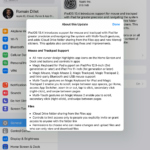TripActions lays off hundreds amid COVID-19 travel freeze
The coronavirus demand crunch has taken another bite: Palo Alto-based corporate travel-focused unicorn TripActions has confirmed laying off hundreds of staff.
Per this post on Blind — written by someone with a verified TripActions email address — the company laid off 350 people. Business Insider reported the same figure yesterday, and the Wall Street Journal said the layoffs amount to between one-quarter to one-fifth of the startup’s total staff, citing a person familiar with the situation.
Update: A spokesman for TripActions told us the number of impacted employees impacted is “less than 300” — although he qualified the remark by saying the figure includes 25 people who were offered other roles within the company.
In an earlier email to Crunchbase News TripActions confirmed axing jobs in response to the COVID-19 global health crisis — saying it had “cut back on all non-essential spend.” It did not confirm exactly how many employees it had fired at that point.
“[We] made the very difficult decision to reduce our global workforce in line with the current climate,” TripActions wrote in the statement. “We look forward to when the strength of the global economy and business travel inevitably return and we can hire back our colleagues to rejoin us in our mission to make business travel effortless for our customers and users.”
“This global health crisis is unlike anything we’ve ever seen in our lifetimes, and our hearts go out to everyone impacted around the world, including our own customers, partners, suppliers and employees,” it added. “The coronavirus has had [a] wide-reaching effect on the global economy. Every business has been impacted including TripActions. While we were fortunate to have recently raised funding and secured debt financing, we are taking appropriate steps in our business to ensure we are here for our customers and their travelers long into the future.”
Per the post on Blind, TripActions is providing one week of severance to sacked staff and medical cover until end of month. “With [the coronavirus pandemic] going on you think they would do better,” the OP wrote. The layoffs were made by Zoom call, they also said.
However TripActions’ spokesman disputed the details about severance and medical cover, saying it is offering severance packages for U.S. employees that include two months of company-paid COBRA health insurance coverage, extending health benefits through the end of June, along with a minimum of 3 weeks salary.
He added that U.S. employees who were given notice yesterday were told their last day would be April 1, 2020 — meaning their health benefits continue through the end of April.
Travel startups are facing an unprecedented nuclear winter as demand has fallen off a cliff globally — with little prospect of a substantial change to the freeze on most business travel in the coming months as rates of COVID-19 infections continue to grow exponentially outside China.
However, TripActions is one of the highest valued and best financed of such startups, securing a $500 million credit facility for a new corporate product only last month. At the time, Crunchbase recorded $480 million in tracked equity funding for the company, including a $250M Series D TripActions raised in June from investors including a16z, Group 11, Lightspeed and Zeev Ventures.
Before the layoffs, the company had already paused all hiring, per one former technical sourcer for the company writing on LinkedIn.
This post was updated with additional comment from TripActions
Powered by WPeMatico
Second Life-maker calls it quits on their VR follow-up
The game developer behind Second Life has abandoned its grand efforts for a virtual reality follow-up to its early 2000s hit.
SF-based Linden Lab announced today that they’ve sold off assets related to Sansar to a small, little-known company called Wookey Search Technologies, which will take over development of the title. Linden Lab will continue developing and maintaining Second Life and it sounds like some of its employees will be joining Wookey. The deal was reported by Protocol.
The game studio had already announced layoffs last month.
Second Life has remained in the limelight of popular culture, and the studio claimed to still be hauling in substantial revenues from the game in recent years. That said, the failure of Sansar is a disaster for Linden Lab, which has focused considerable resources on the effort since it first teased the platform back in 2014.
When the title was announced, VR was at the peak of its hype following Facebook’s Oculus VR acquisition. Though Sansar launched in beta with support for both VR and desktop usage, the slow adoption of VR certainly didn’t help the title’s popularity. The studio’s leadership has detailed in interviews that the majority of Sansar’s users are desktop-based.
Given the evident turmoil at the studio, Sansar’s user base will likely be relieved to hear that the studio did their best to give the title a soft landing, though it’s unclear what resources its new acquirer has access to.
Powered by WPeMatico
Looking back at Zoom’s ascent a year after it filed to go public
Zoom, a video chat service then popular with corporations, filed to go public on March 22, 2019.
Best known in venture and corporate circles, Zoom was far from a household name at the time. However, the groundwork for its 2020-era consumer breakthrough during the novel coronavirus epidemic was detailed during its IPO march in the years leading up to its public debut.
The company didn’t begin trading until mid-April last year, but it was through its March 2019 IPO filing that its name took on new prominence; here was a quickly growing software as a service (SaaS) business that was posting profits at the same time. As the rate at which unprofitable companies went public set records, Zoom’s growth and positive net income helped it gain brand recognition even before its shares began to trade.
Investors certainly recognized this was a rarity among SaaS companies, sending its IPO share price up 72% in its first day. The company’s equity has risen more than 100% since that first close, more than doubling in less than a year. Not bad in a market that has turned ice-cold in recent weeks.
To understand how Zoom became so valuable as a business — and later as a consumer product — let’s go back in time to consider its product and business strategies. As we’ll see, to become the video chat tool that everyone is using today, Zoom had to beat a host of entrenched competition. And it did so while making money, helping set the financial stage for its prominence today.
Product history
Powered by WPeMatico
Swiss startup Creal is building display tech for the next generation of AR/VR headsets
After years of hype, the AR/VR space has certainly grown quieter as of late, but some investors are still coalescing behind a vision that the technologies could one day replace mobile if the technical kinks can be worked out.
Creal is a Swiss startup that’s working on some fundamental display technologies that could make VR and AR headsets more comfortable with more life-like optics.
The startup raised a $7.4 million Series A last year from Investiere and DAA Capital Partners. The company announced this week that they received grant funding from the European Union’s Horizon 2020 research and innovation program to continue working on their light-field display tech.
Light-field displays are a category of displays that are quite a bit different than anything you’ve seen. While existing AR and VR headsets can show you stereoscopic 3D by displaying slightly different images to each of your eyes, future headsets will allow you to change what’s in and out of focus based on where your eyes are looking. The big optics issue this solves for is called the vergence-accommodation conflict, and it allows for interacting with objects closer to your face and functionally makes reading in VR quite a bit more effective as well.
Here’s a “through-the-lens” demo of the startup’s technology from a video posted last year:
There are varying degrees of how the technology is implemented. Magic Leap rolled out a lightweight version of its technology in its headset that leverages a pair of focal planes that are switched between with eye-tracking. This “varifocal” approach is also something that Facebook is investing in; they’ve showcased prototype headsets that allow users to shift their focus between multiple planes.
Creal is having to deal with some of the same struggles as its big company counterparts have when it comes to making sacrifices in order to miniaturize the technology. Integrating their tech into a virtual reality headset is the nearest-term target for the company, though they have ambitions to integrate into lightweight AR headsets within the next several years.
Startups building tech like Creal may be particularly at risk to a global recession, when investment in frontier technologies typically takes a big hit. A prolonged period of economic instability will almost certainly tilt the scales in the favor of big tech companies like Facebook, as startups approaching the same advances will likely be forced to push out roadmaps and cut costs in order to survive.
While Oculus has seen some recent success in expanding the VR market niche, augmented reality hardware has been an incredibly tough sell for startups. A number of companies in the space shut down last year, including Meta, ODG and Daqri. Earlier this month, Bloomberg reported that Magic Leap was positioning itself for a sale after raising billions of dollars in funding.
Powered by WPeMatico
Game downloads will be throttled to manage internet congestion
For the billions stuck at home during the global effort to flatten the curve, gaming is a welcome escape. But it’s also a bandwidth-heavy one, and Microsoft, Sony and others are working to make sure that millions of people downloading enormous games don’t suck up all the bandwidth. Don’t worry, though, it won’t affect your ping.
A blog post by content delivery network Akamai explained a few things it is doing to help mitigate the tidal wave of traffic that the internet’s infrastructure is experiencing. Although streaming video is of course a major contributor, games are a huge, if more intermittent, burden on the network.
Akamai is “working with leading distributors of software, particularly for the gaming industry, including Microsoft and Sony, to help manage congestion during peak usage periods. This is very important for gaming software downloads, which account for large amounts of internet traffic when an update is released,” the post reads.
Take the new “Call of Duty: Warzone” battle royale game, released last week for free and seeing major engagement. If you didn’t already own the latest CoD title, Warzone was a more than 80-gigabyte download, equivalent to dozens of movies on Netflix . And what’s more, that 80 gigs was likely downloaded at the maximum bandwidth home connections provided; streaming video is limited to a handful of megabits over the duration of the media, nowhere close to saturating your connection.
And Warzone isn’t alone — there are tons of high-profile games being released at a time when many people have nothing to do but sit at home and play games — PC game platform Steam posted a record 20 million concurrent players the other day, and one analysis saw a 400% increase in gaming traffic. So gaming is bigger than ever, while games are bigger than ever themselves.
As a result, gaming downloads will be throttled for the foreseeable future, at least in some markets. “Players may experience somewhat slower or delayed game downloads,” wrote Sony Interactive Entertainment CEO Jim Ryan in a brief blog post. I’ve asked Microsoft, Nintendo and Valve for comment on their approach as well.
It’s important to note that this should not apply to the rest of the gaming experience. Unlike downloading games, playing games is a remarkably low-bandwidth task — it’s important for packets to be traded quickly so players are in sync, but there aren’t a lot of them compared with even a low-resolution streaming video.
The best thing to do is to set your games to be downloaded overnight, as local infrastructure will be less taxed while everyone in your region is asleep. If you have downloads or updates coming during the day, don’t be surprised if they take longer than usual or are queued elsewhere.
Powered by WPeMatico
Control each other’s apps with new screensharing tool Screen
It’s like Google Docs for everything. Screen is a free interactive multiplayer screensharing app that gives everyone a cursor so they can navigate, draw on and even code within the apps of their co-workers while voice or video chatting. Screen makes it easy and fun to co-design content, pair program, code review or debug together, or get feedback from a teacher.
Jahanzeb Sherwani sold his last screensharing tool Screenhero to Slack, but it never performed as well crammed inside the messaging app. Five years later, he’s accelerated the launch of Screen to today and made it free to help all the teams stuck working from home amidst coronavirus shelter-in-place orders.
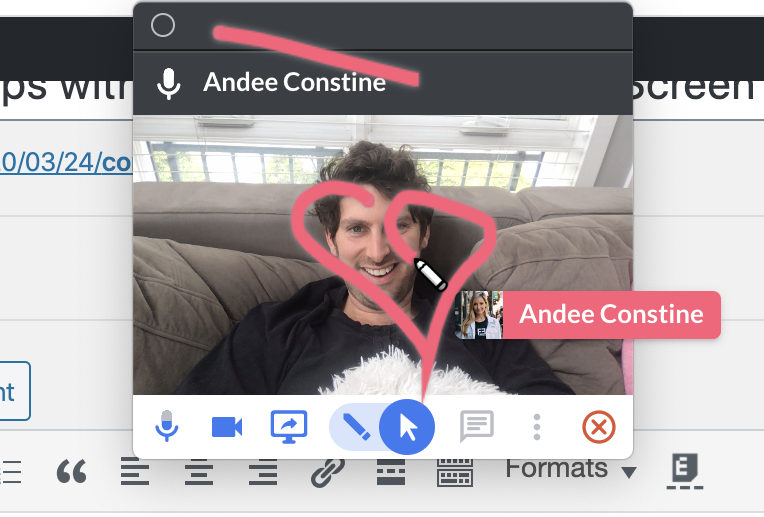
Sherwani claims that Screen is “2x-5x faster than other screen sharing tools, and has between 30ms-50ms end-to-end latency. Most other screen sharing tools have between 100ms-150ms.” For being built by just a two-person team, Screen has a remarkable breadth of features that are all responsive and intuitive. Sherwani says the startup is making due with “no funding, 100% bootstrapped, and I’d like to keep it that way” so he can control his destiny rather than being prodded for an exit by investors.

A few things you can do with Screen:
- Share your screen from desktop on Mac, Windows and Linux while chatting over audio or video calling in a little overlaid window, or join a call and watch from your browser or mobile
- Use your cursor on someone else’s shared screen so you can control or type anything just like it was your computer
- Overlay drawing on the screenshare so you can annotate things like “this is misspelled” or “move this there,” with doodles fading away after a few seconds unless your hold down your mouse or turn on caps lock
- Post ephemeral text comments so you can collaborate even if you have to be quiet
- Launch Screen meetings from Slack and schedule them with Google Calendar integration
- Share invite links with anyone with no need to log in or be at the same company, just be careful who you let control your Screen
Normally Screen is free for joining meetings, $10 per month to host them and $20 per person per month for enterprise teams. But Sherwani writes that for now it’s free to host too “so you can stay healthy & productive during the coronavirus outbreak.” If you can afford to pay, you should, though, as “We’re trying this as an experiment in the hope that the number of paid users is sufficient to pay for our running costs to help us stay break-even.”
Sherwani’s new creation could become an acquisition target for video call giants like Zoom, but he might not be so willing to sell this time around. Founded in 2013, Screenhero was incredibly powerful for its time, offering some of the collaboration tools now in Screen. But after it was acquired by Slack after raising just $1.8 million, Screenhero never got the integration it deserved.
“We finally shipped interactive screen sharing almost three years later, but it wasn’t as performant as Screenhero, and was eventually removed in 2019,” Sherwani writes. “Given that it was used by a tiny fraction of Slack’s user-base, and had a high maintenance cost, this was the correct decision for Slack .” Still, he explains why a company like Screen is better off independent. “Embedding one complex piece of software in another imposes a lot more constraints, which makes it more expensive to build. It’s far easier to have a standalone app that just does one thing well.”
Screen actually does a lot of things well. I tried it with my wife, and the low latency and extensive flexibility made it downright delightful to try co-writing this article. It’s easy to imagine all sorts of social use cases springing up if teens get hold of Screen. The whole concept of screensharing is getting popularized by apps like Squad and Instagram’s new Co-Watching feature that launched today.

The new Co-Watching feature is like screensharing just for Instagram
Eventually, Screen wants to launch a virtual office feature so you can just instantly pull co-workers into meetings. That could make it feel a lot more like collaborating in the same room with someone, where you can start a conversation at any time. Screen could also democratize the remote work landscape by shifting meetings from top-down broadcasts by managers to jam sessions where everyone has a say.
Sherwani concludes, “When working together, everyone needs to have a seat at the table.”
Powered by WPeMatico
Apple releases iOS and iPadOS 13.4 with trackpad support
Apple has released software updates for the iPhone, the iPad, the Apple Watch, the Apple TV and the Mac. The biggest changes are on the iPad. Starting today, you can pair a mouse or trackpad with your iPad and use it to move a cursor on the display.
Apple unveiled trackpad support for iPadOS when it announced the new iPad Pro last week. While the company plans to sell a new Magic Keyboard with a built-in trackpad, you don’t need to buy a new iPad or accessory to access the feature.
When you pair a trackpad and start using it, Apple displays a rounded cursor on the screen. The cursor changes depending on what you’re hovering over. The cursor disappears and highlights the button you’re about to activate. It looks a bit like moving from one icon to another on the Apple TV.
If you’re moving a text cursor for instance, it becomes a vertical bar. If you’re resizing a text zone in a Pages document, it becomes two arrows. If you’re using a trackpad, iPadOS supports gestures that let you switch between apps, open the app switcher and activate the Dock or Control Center.
In addition to trackpad support, iOS and iPadOS 13.4 add a handful of features. You can share an iCloud Drive folder with another iCloud user — it works pretty much like a shared Dropbox folder.
There are nine new Memoji stickers, such as smiling face with hearts, hands pressed together and party face. Apple has tweaked buttons to archive/delete, move, reply and compose and email in the Mail app.
Additionally, Apple added the ability to release a single app binary on all App Stores, including the iOS and Mac App Store. It means that developers can release a paid app on the Mac and the iPhone — and you only have to buy it once.
Also, macOS 10.15.4 adds Screen Time Communication Limits, a feature that already exists on iOS. It lets you set limits on Messages and FaceTime calls.
When it comes to watchOS, version 6.2 adds ECG support for users in Chile, New Zealand and Turkey. Apple now lets developers provide in-app purchases for Apple Watch apps, as well.
All updates include bug fixes and security patches. Head over to the Settings app on your devices to download and update your devices if you haven’t enabled automatic software updates.
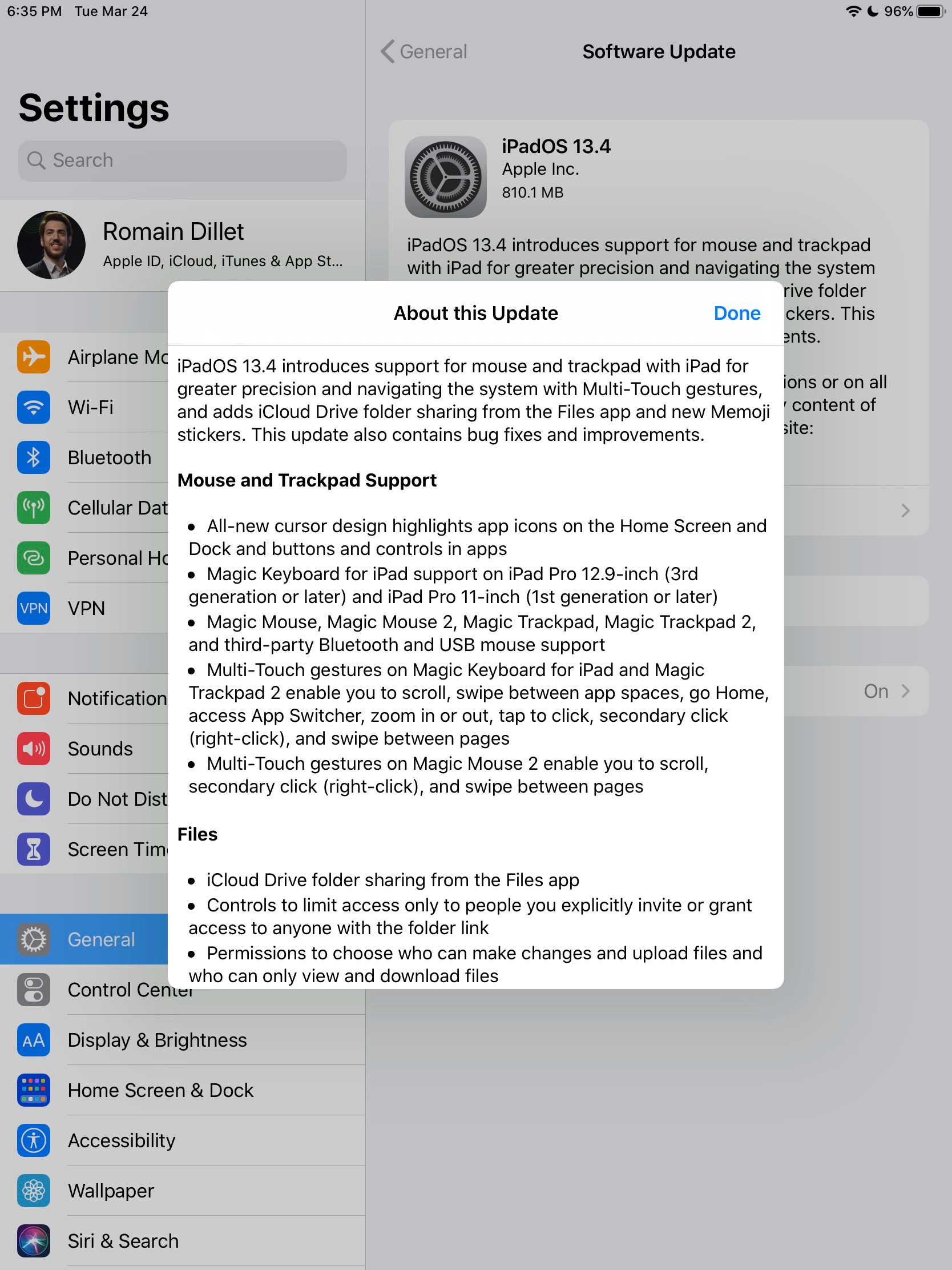
Powered by WPeMatico
Snapchat’s Zenly launches shelter-in-place leaderboard
Snapchat’s location-sharing app acquisition Zenly has gamified shelter-in-place during the COVID-19 outbreak. Today the app launched its Stay At Home challenge that shows a leaderboard of which friends have spent the most percentage of the last three days in their homes. Users can see who’s social distancing the best and share stickers of the scoreboard and coronavirus prevention tips to Snapchat, Instagram and other apps.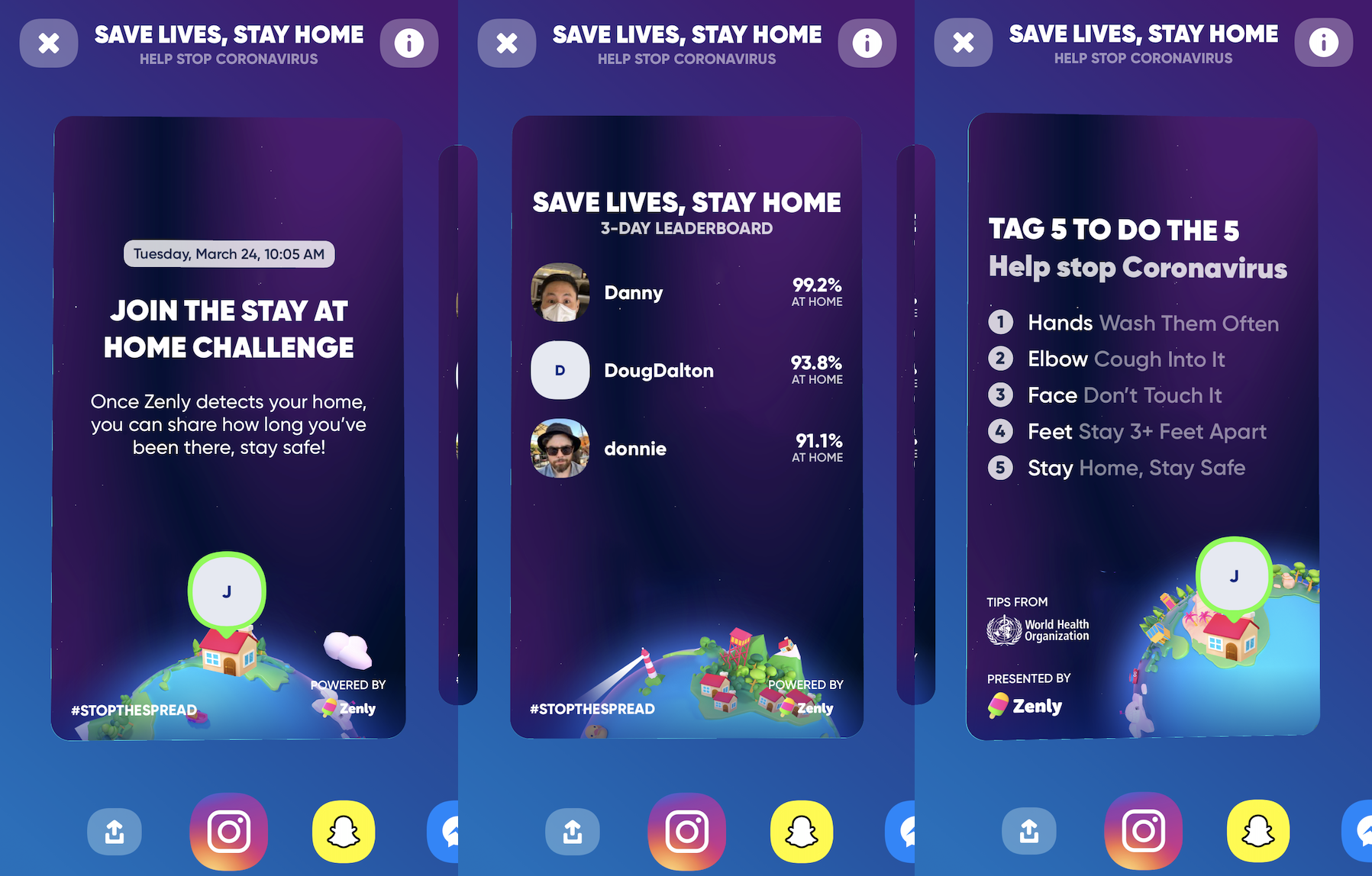
Location apps like Zenly that typically encourage users to go out and explore the world suddenly lost most of their purpose due to the widespread order for people to self-quarantine. They even might have incentivized people to disobey those orders. But by building a game around isolation, Zenly could make it cool to show off how you’re NOT grabbing coffee, visiting friends or taking a walk down Main Street.
Zenly’s CEO Antoine Martin announced the feature this morning, and credited a tweet I posted on March 15 calling for developers to build a gamified quarantine app as the inspiration. The quick work and rapid deployment was spearheaded by Danny Trinh, the renowned designer of Path who joined the company last year. TechCrunch broke the news back in June 2018 that Snapchat had acquired Zenly for $213 million plus retention bonuses.
@thek3vinkim @TurnerNovak @GillesPoupardin @LucasLambertini @nicolasfallourd for staying home!
And thanks @JoshConstine for the idea leading to this feature! pic.twitter.com/CEwrJiCFHd
— Antoine Martin (@an21m) March 24, 2020
Beyond Zenly’s version of “Pokemon No Go,” the app is also offering tips for containing coronavirus and a link to World Health Organization info. You can also attach a surgical mask to your profile pic to let your friends know you’re taking social distancing seriously.
What could really make a difference in convincing people to do their part to fight this worldwide pandemic, though, is Zenly’s coronavirus lens for its map that it released last week. It lets you look around the world and see the number of confirmed cases and recoveries in each country or state. Zenly updates the data three times per day based on the The John Hopkins Center for Systems Science and Engineering. The map also overlays info from the WHO, the Netherlands’ BNO News, China’s DXY and this crowdsourced GitHub.

We’ve asked if there are any plans to launch similar features on Snap Map, which was inspired by Zenly. To date, Snapchat has mostly allowed its acquisition to operate independently from its existing headquarters in Paris.
“During these tough times, millions of people are turning to Zenly as a source of information and connection, so that they can feel close to friends and family even when social distancing is keeping them apart,” says Martin. “While spending too much time at home could be perceived as uncool, we wanted to flip the narrative to make it something that our community would be proud of and do our part in stopping the spread.” Foursquare founder Dennis Crowley told me his company was looking for a way to build its own quarantine gamification, and now has complimented Zenly on its execution, calling it “clever and awesome and beautiful.”
Knowing what’s happening around the globe might reinforce the gravity of our situation and that people can’t just go about their normal routine. We all have to battle this together, even if we’re stuck apart. Thanks to Zenly, social distancing just got a lot more social.
Powered by WPeMatico
Watchworthy’s personalized TV recommendation app will help you find your next binge
Ranker, an online publisher that turns crowdsourced lists and fan rankings into a data business, is now turning its attention to the world of streaming services. The company this week launched a new app, Watchworthy, that helps you find something new to watch across TV networks and more than 200 streaming services like Netflix, Hulu, Prime Video, Apple TV+ and many more.
Ranker, as you may already know, is the website that always pops up in search results when you’re looking for some sort of “best of” round-up — whether that’s in entertainment, music, sports, culture, history or across other topics. On the site, online visitors can vote on their favorites in categories as broad as the “best hip-hop artists” or as niche as the “best coconut oil brands.”
Ranker’s TV lists are among its more popular categories and one that makes the most sense for turning into an app. And right now, everyone is looking for something new to watch as we’re stuck indoors due to the COVID-19 health crisis.
While there are already a number of apps promising to offer TV recommendations — like Reelgood, TV Time, Yidio and JustWatch, for example — Watchworthy’s advantage is Ranker’s data powering its recommendations. Its machine learning platform applies first-party correlation data it has amassed over a decade from one billion votes on Ranker.com. As the company explains, this makes its data more “statistically relevant.”
For example, its data indicates that “Better Call Saul” fans tend to like other gritty, dark dramas like “House of Cards,” “Ray Donovan” and “True Detective,” but also more cerebral comedies like “Nathan for You” and “High Maintenance.”

To figure out what sort of TV programs interest you, Watchworthy at first launch jumps you into a rating experience to provide it with your data. In 60 seconds, you fly through a ratings feature that uses a Tinder-like interface, where a right swipe is a “like” and a left swipe is a “dislike” (and up is “not sure”). After you thumbs up and down a selection of shows, you can begin to browse your recommendations.
In my test, this initial set of recommendations was already above average compared with some of the other apps I’ve tried. Your mileage may vary, of course, as it’s a highly personalized experience. Watchworthy may not have offered dozens of precise matches to my tastes at first, but it did remind me of several shows I had seen in passing and thought at some point I might like to try, as well as a few new discoveries.
Its suggestions are ranked by a “worthy” score that indicates the likelihood that the show is worthy of your time. You can also filter the list of recommendations by service, genre, run time and MPAA ratings.
The app got a little better after spending a little more time to like and dislike more shows and to personalize it as to which streaming services I was using. This allowed me to integrate recommendations from more sources — like HBO, Apple TV+, Disney+, Showtime and others.
However, I did get to the point where liking and disliking didn’t refine my recommendations further, so there is a limit to what Watchworthy can do. I also found the app to be a little lacking on the reality and nonfiction side of things. It tended to push recommendations of scripted shows, despite my having “liked” shows such as “The Great British Bake Off,” “Windy City Rehab” and “Queer Eye,” among others.
As you find shows you like in the app’s recommendations, you can add them to the universal watchlist in the app for easy access.
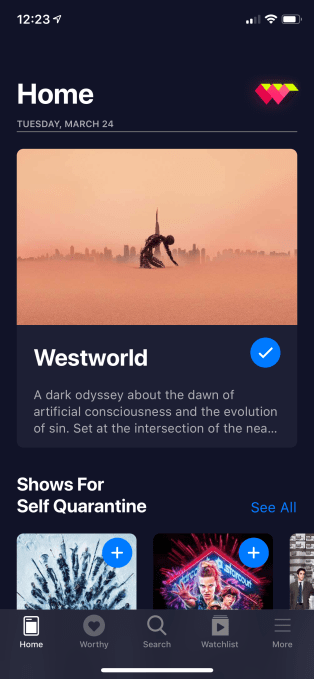
You can also create an account to save your data. Watchworthy at launch supports Apple’s private sign-in option, as well as Google, Facebook and email.
The homepage of the app also integrates Ranker’s existing TV lists. The website has more than 50,000 of these, but the app isn’t an endless scroll. Instead, it updates the home page with relevant, timely content. For example, today’s lists include “Shows For Self Quarantine,” “Shows To Distract You,” “Funniest Shows On Netflix,” “Best Family Shows On Amazon Prime” and other round-ups.

The new app serves not only as a discovery tool for TV viewers, cord-cutters and binge-watchers, but also as fuel for Ranker’s data collection business. Ranker licenses its data and insights to third-parties, like marketers, advertisers, researchers, developers and service providers. However, its data isn’t focused on demographics so much as it is on “psychographics” — meaning, your tastes. Ranker isn’t asking you for private information, only what you like.
In a way, Watchworthy serves as a demo app of what can be done with Ranker’s psychographic insights, in this case, for TV viewers. But the same sort of system could be built for other categories, like music, cooking, film, travel and more.
The company says this year it will also make its Watchworthy app available to connected devices, like Roku, Apple TV and Amazon Fire TV. It also plans to add movie recommendations and shared watchlists.
Watchworthy is a free download on iOS with Android to come. On any mobile device, it works from watchworthy.app.
Powered by WPeMatico
Instagram launches Co-Watching of posts during video chat
Now you can scroll Instagram together with friends, turning a typically isolating, passive experience into something more social and active. Today Instagram launched Co-Watching, which lets friends on a video chat or group video chat browse through feed posts one user has Liked or Saved, or that Instagram recommends.
Co-Watching could let people ooh, ahh, joke and talk about Instagram’s content instead of just consuming it solo and maybe posting it to a chat thread so friends can do the same. That could lead to long usage sessions, incentivize users to collect a great depository of Saved posts to share and spur more video calls that drag people into the app. TechCrunch first reported Instagram was testing Co-Watching a year ago, so we’ll see if it managed to work out the technical and privacy questions of operating the feature.
 The launch comes alongside other COVID-19 responses from Instagram that include:
The launch comes alongside other COVID-19 responses from Instagram that include:
- Showing a shared Instagram Story featuring all the posts from you network that include the “Stay Home” sticker
- Adding Story stickers that remind people to wash their hands or keep their distance from others
- Adding coronavirus educational info to the top of results for related searches
- Removing unofficial COVID-19 accounts from recommendations, as well as virus-related content from Explore if it doesn’t come from a credible health organization
- Expanding the donation sticker to more countries so people can search for and ask friends for contributions to relevant nonprofits
These updates build on Instagram’s efforts from two weeks ago, which included putting COVID-19 prevention tips atop the feed, listing official health organizations atop search results and demoting the reach of coronavirus-related content rated false by fact checkers.
But Co-Watching will remain a powerful feature long after the quarantines and social distancing end. The ability to co-view content while browsing social networks has already made screensharing app Squad popular. When Squad launched in January 2019, I suggested that, “With Facebook and Snap already sniffing around Squad, it’s quite possible they’ll try to copy it.” Facebook tested a Watch Together feature for viewing Facebook Watch videos inside Messenger back in April. And now here we are with Instagram.
The question is whether Squad’s first-mover advantage and option to screenshare from any app will let it hold its own, or if Instagram Co-Watching will just popularize the concept and send users searching for more flexible options like Squad. “Everyone knows that the content flooding our feeds is a filtered version of reality,” Squad CEO Esther Crawford told me. “The real and interesting stuff goes down in DMs because people are more authentic when they’re 1:1 or in small group conversations.”
Squad, which lets you screenshare anything, including websites and your camera roll, won’t be fully steamrolled. When asked if Instagram would build a full-fledged screensharing feature, Instagram CEO Adam Mosseri said they’re “Not currently working on it . . . screensharing is not at the top of the list for us at Instagram.”
 With Co-Watching, Instagram users can spill the tea and gossip about posts live and unfiltered over video chat. When people launch a video chat from the Direct inbox or a chat thread, they’ll see a “Posts” button that launches Co-Watching. They’ll be able to pick from their Liked, Saved or Explore feeds and then reveal it to the video chat, with everyone’s windows lined up beneath the post.
With Co-Watching, Instagram users can spill the tea and gossip about posts live and unfiltered over video chat. When people launch a video chat from the Direct inbox or a chat thread, they’ll see a “Posts” button that launches Co-Watching. They’ll be able to pick from their Liked, Saved or Explore feeds and then reveal it to the video chat, with everyone’s windows lined up beneath the post.
Up to six people can Co-Watch at once on Instagram, consuming feed photos and videos but not IGTV posts. You can share public posts, or private ones that everyone in the chat are allowed to see. If one participant is blocked from viewing a post, it’s ineligible for Co-Watching.
Co-Watching could finally provide an answer to Instagram’s Time Well Spent problem. Research shows how the real danger in social network overuse is passive content consumption, like endless solo feed scrolling. It can inspire envy, poor self-esteem and leave users deflated, especially if the highlights of everyone else’s lives look more interesting than their own day-to-day reality. But active sharing, commenting and messaging can have a positive effect on well-being, making people feel like they have a stronger support network.
With Co-Watching, Instagram has found a way to turn the one-player experience into a multi-player game. Especially now with everyone stuck at home and unable to crowd around one person’s phone to gab about what they see, there’s a great need for this new feature. One concern is that it could be used for bullying, with people all making fun of someone’s posts.
But in general, the idea of sifting through cute animal photos, dance tutorials or epic art could take the focus off the individuals in a video chat. Not having one’s face as the center of attention could make video chat less performative and exhausting. Instead, Co-Watching could let us do apart what we love to do together: just hang out.
Powered by WPeMatico




